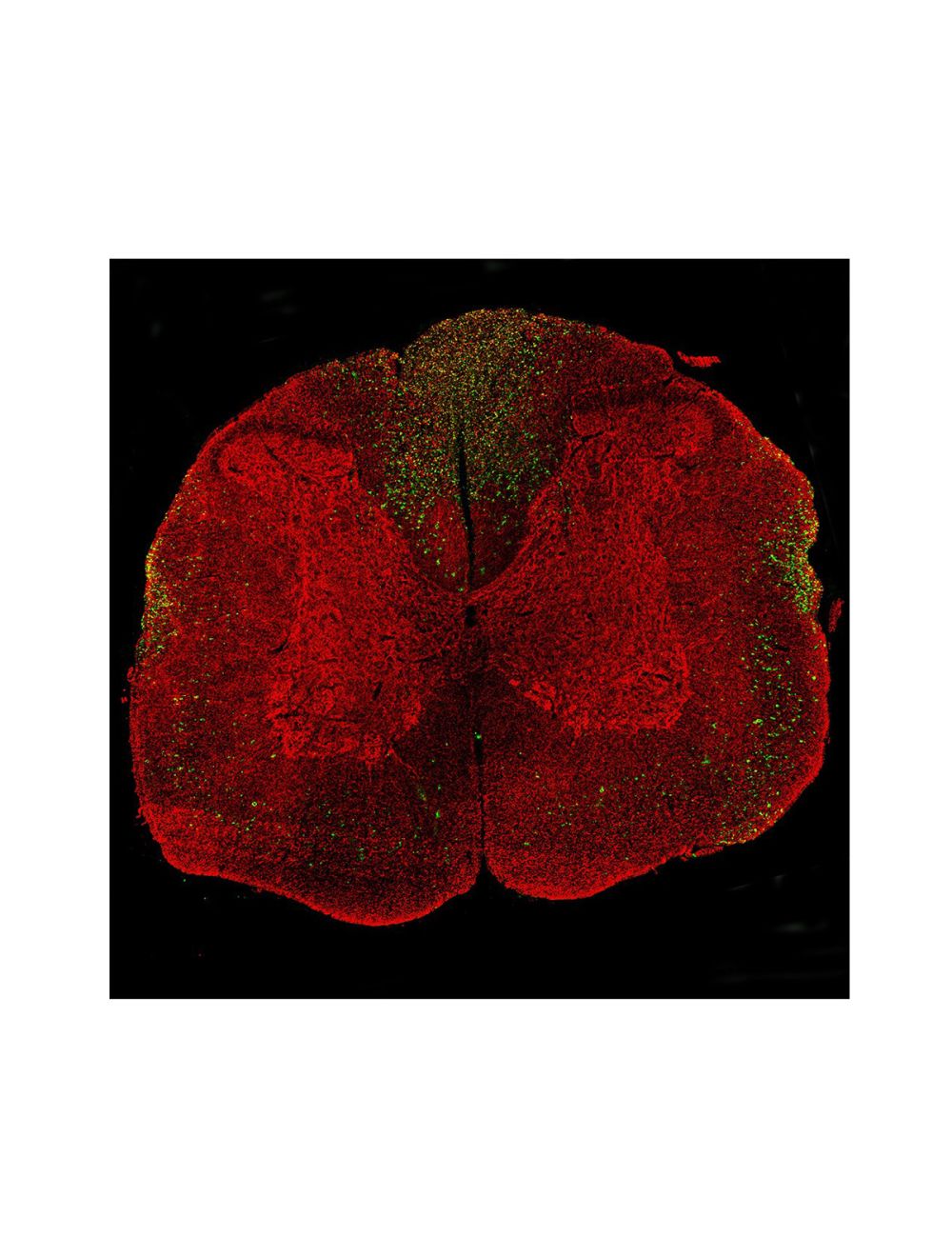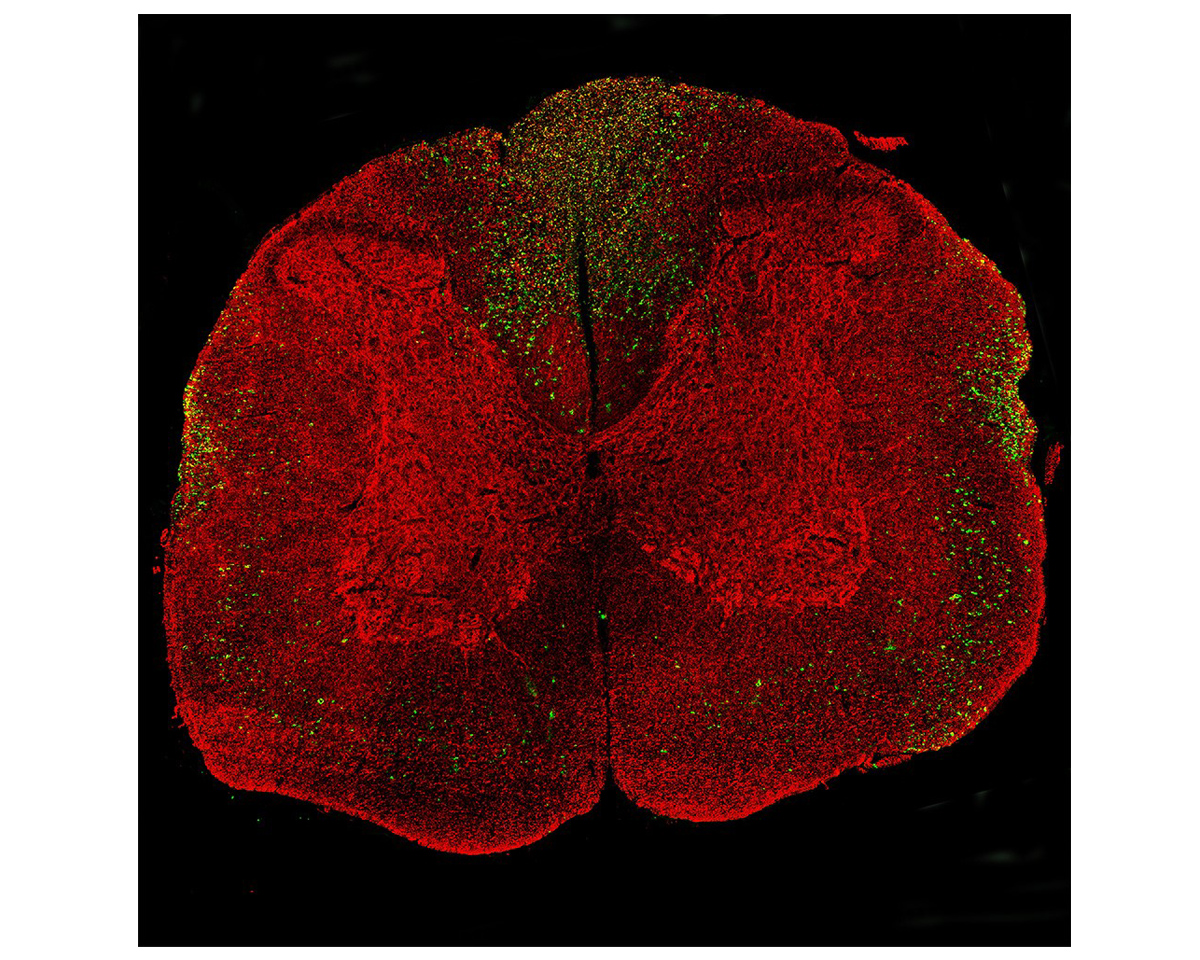Neurofilament light polypeptide (NF-L), DG-Sensor™, Chicken Polyclonal Antibody
- Product Name Neurofilament light polypeptide (NF-L), DG-Sensor™, Chicken Polyclonal Antibody
-
Product Description
Chicken anti-Neurofilament light polypeptide (NF-L), DG-Sensor™, Polyclonal Antibody (Unconjugated), suitable for WB and Immunostaining.
- Alternative Names NFL, Neurofilament light polypeptide, DG-Sensor, NF-L degenerative, NEFL, CMT1F, CMT2E, NF-L, NF68, PPP1R110, neurofilament light, CMTDIG, neurofilament light chain
- Application(s) IF, IHC-non-Paraffin-embedded, WB
- Antibody Host Chicken
- Antibody Type Polyclonal
-
Specificity
Species cross-reactivity includes human, rat, mouse, cow, and pig. These antibodies which recognize epitopes in a small segment of the neurofilament NF-L subunit which are normally not accessible to antibodies but which became available on degeneration in natural or native conditions. Under reduced or proteinase treated tissues or western blot, these antibodies are all specific for NF-L from a variety of species
- Species Reactivity Bovine, Human, Mouse, Pig, Rat
- Immunogen Description The antibody has been made against a proprietary recombinant construct containing amino acids of human NF-L expressed in and purified from E Coli.
- Conjugate Unconjugated
- Purity Description Affinity-purified
- Regulatory Status For research use only.
Product Info
-
Product Description
Chicken anti-Neurofilament light polypeptide (NF-L), DG-Sensor™, Polyclonal Antibody (Unconjugated), suitable for WB and Immunostaining.
-
Related Products
Neurofilament light polypeptide (NF-L), Chicken Polyclonal Antibody
Neurofilament light polypeptide (NF-L), Mouse Monoclonal Antibody (DA2)
Neurofilament light polypeptide (NF-L), Mouse Monoclonal Antibody (7D1)
Neurofilament light polypeptide (NF-L), Mouse Monoclonal Antibody (6H112)
Neurofilament light polypeptide (NF-L), DG-Sensor™, Mouse Monoclonal Antibody (6H63)
Neurofilament light polypeptide (NF-L), DG-Sensor™, Mouse Monoclonal Antibody (1D44)
Neurofilament light polypeptide (NF-L), Mouse Monoclonal Antibody (1B11)
Neurofilament light polypeptide (NF-L), Rabbit Polyclonal Antibody
Neurofilament light polypeptide, C-terminus, (NF-L-Ct), Rabbit Polyclonal Antibody
Neurofilament light polypeptide (NF-L), DG-Sensor™, Rabbit Polyclonal Antibody
- Application(s) IF, IHC-non-Paraffin-embedded, WB
-
Application Details
CPCA-NF-L-Degen was raised against a proprietary recombinant immunogen containing amino acids 311-375 of the human NF-L sequence. The antibody works well on western blots of a variety of species but binds only degenerated processes in sectioned material.
Western blot (WB):
A dilution of 1:1,000 - 1:5,000 is recommended for WB. The antibody recognizes NF-L in reduced westerns regardless of the disease state. A dilution of 1:1,000 – 1:2,000 is recommended for ICC/IF and IHC. Caution: epitope reactivity is sensitive to protease attack; proteinase antigen recovery is not recommended and could lead to false positives in staining. Biosensis recommends optimal dilutions/concentrations should be determined by the end user.
Immunofluorescence (IF), Immunohistochemistry (IHC):
Using standard fluorescent antibody methods, a 1: 5,000-10,000 dilution is recommended for IF/IHC. For example, block and permeabilize sections in 5-10% normal goat serum or serum of the species the secondary antibodies were made in, in PBS plus 1% Triton-100 (PBST) for 1 hour with slight agitation, followed by primary antibody incubations and fluorescent secondary identification. High primary antibody dilutions require refrigerated, overnight incubations for best results. Recommended fixation is 4% PFA fixed, frozen tissue 20-50 microns; other fixation methods have not been tested and are not recommended at this time.
Degeneration-specific detection is fixation, antigen recovery, and concentration-dependent. C-2125- 100 was raised against a proprietary recombinant immunogen within the human NF-L sequence's amino acids 311-375. This peptide epitope can be uncovered in degenerating cells but not normal cells. However, treatment of the fixed tissue with high temperatures, proteinase, or other denaturants may cause the reactive epitope to become exposed in healthy cells, leading to a false positive. Biosensis recommends experimenting with treated and untreated tissues when first using these antibodies if degeneration specificity is desired. The exact conditions and dilutions must be determined experimentally by the end user.
This antibody will detect NL-L protein in paraffin-embedded rodent tissues; however, the degeneration-specific detection can be problematic in paraffin tissues, particularly if Heat-Induced Epitope Retrieval (HIER), or other common antigen recovery methods are used. This is because the reactive epitope, which is covered in healthy cells but exposed in degenerative cells, could become accessible to the antibody in healthy cells, leading to false positives. For this reason, paraffin- embedded tissues are not recommended if degeneration-specific detection is desired.
- Target Neurofilament light polypeptide (NF-L) [degenerated]
-
Specificity
Species cross-reactivity includes human, rat, mouse, cow, and pig. These antibodies which recognize epitopes in a small segment of the neurofilament NF-L subunit which are normally not accessible to antibodies but which became available on degeneration in natural or native conditions. Under reduced or proteinase treated tissues or western blot, these antibodies are all specific for NF-L from a variety of species
- Target Host Species Human
- Species Reactivity Bovine, Human, Mouse, Pig, Rat
- Antibody Host Chicken
- Antibody Type Polyclonal
- Antibody Isotype IgY
- Conjugate Unconjugated
- Immunogen Description The antibody has been made against a proprietary recombinant construct containing amino acids of human NF-L expressed in and purified from E Coli.
- Purity Description Affinity-purified
- Format Lyophilized from PBS buffer pH 7.2-7.6 with 0.1% trehalose, and sodium azide
- Reconstitution Instructions Spin vial briefly before opening. Reconstitute with 100 µL sterile-filtered, ultrapure water to achieve a 1 mg/mL concentration. Centrifuge to remove any insoluble material.
- Storage Instructions Store lyophilized antibody at 2-8°C After reconstitution of lyophilized antibody, aliquot and store at -20°C for a higher stability. Avoid freeze-thaw cycles. Store at 4°C for up to one month for short term storage and frequent use.
- Batch Number Please see item label.
- Expiration Date 12 months after date of receipt (unopened vial).
- Alternative Names NFL, Neurofilament light polypeptide, DG-Sensor, NF-L degenerative, NEFL, CMT1F, CMT2E, NF-L, NF68, PPP1R110, neurofilament light, CMTDIG, neurofilament light chain
- Uniprot Number P07196
- Uniprot Number/Name P07196 (NFL_HUMAN)
- Scientific Background Our DG-Sensor™ chicken antibody works well on western blots of a variety of species for NF-L protein detection, regardless of injury state, but binds only degenerated processes in fixed, sectioned native material on injured or diseased brains. Caution: epitope reactivity is sensitive to protease attack; proteinase antigen recovery is not recommended and could lead to false positives in staining.
- Shipping Temperature 25°C (ambient)
- UNSPSC CODE 41116161
- Regulatory Status For research use only.

 1800 605-5127
1800 605-5127 +61 (0)8 8352 7711
+61 (0)8 8352 7711


